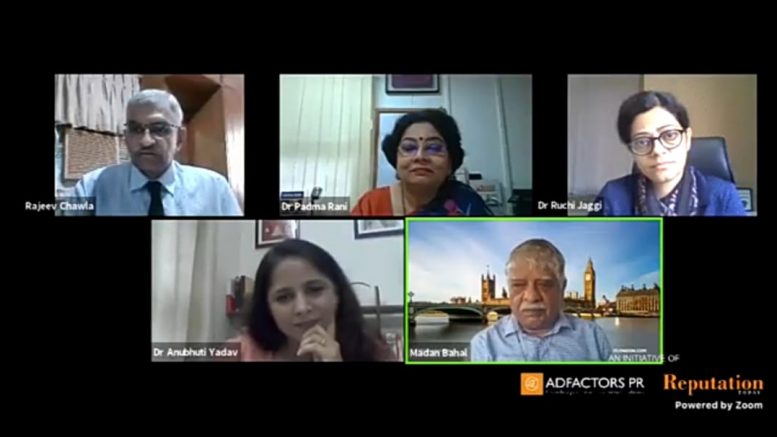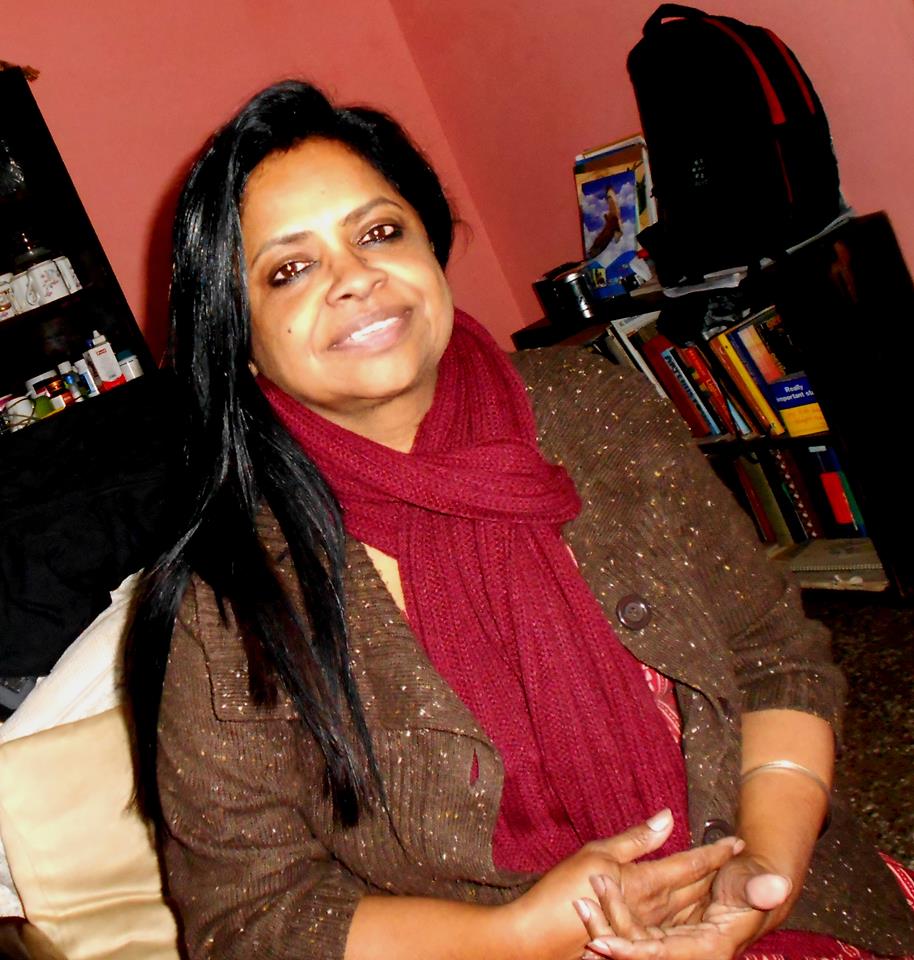We have been on lockdown mode since March, and it has impacted diverse dimensions of life. Many businesses are adopting the ‘wait and watch’ approach, some have gained, but let’s take a look the education scene for Public Relations. Notably, it is seen that COVID-19 is reinventing PR practice and skills. That’s incredibly exciting for those who invest in the future – like institutes that are educating students to enter the world of PR.
Interestingly, the focus was on ‘The Future of PR Education’ at The Communicators’ Assembly Point 7, where a panel of distinguished educationists looked at all angles and discussed relevant factors.
Now in post-COVID times, we constantly say the ‘new normal’ but it’s not correct, for we have entered a “state of dynamic imbalance” said Madan Bahal, Co-founder & Managing Director, Adfactors PR, who was the moderator. Commenting that “this should begin a debate for a larger conversation and it should become the foundation for the evolution of PR”, he pointed out that the most affected profession is the PR profession and the kind of demands it is facing is massive; no other profession deals with as much complexity as Public Relations!
The participants in the discussion were: Dr Anubhuti Yadav, Head – Department of New Media and Information Technology, Course Director, Advertising and Public Relations, Indian Institute of Mass Communication (IIMC), New Delhi; Dr Padma Rani, Associate Professor at the Manipal Institute of Communication (MIC), Manipal; Dr Ruchi Jaggi, Director, Symbiosis Institute of Media and Communication (SIMC), Pune and Mr Rajeev Chawla, Professor & Head, Department Of Public Relations & Corporate Communication, Xavier Institute of Communications (XIC), Mumbai.
Navigating through tough times
How did the esteemed institutes navigate through the challenges that struck their path, after the pandemic struck? “It was a tough reinventing ourselves, as there were a lot of challenges at different levels”, responded Dr. Anubhuti Yadav. The education sector is going through a teutonic shift, and technology is becoming the major intermediary in the teaching-learning process. Not having had the time to plan, as teachers, they were most disappointed where they had to end the academic year abruptly and examinations and placements were affected. Given the situation, the positive things that emerged were – experimenting and reinventing new techniques of teaching (and ‘blended learning’ technique is one of them); strengthening the digital infrastructure, generating resources and stepping into extended collaboration with the business world, she explained.
The future pathway requires a regular interaction between academia and the business sector. What happened at MIC was that students had to vacate campus overnight, and it was a disruptive semester. But Dr. Padma Rani remarked that the new semester will be online, which has challenges like investment needs, faculty training and a great deal of collaboration. She threw light on the fact that regarding PR education per se, we will have to look at how to incorporate and be innovative in digital content.
“It’s a moment of reckoning for all of us. It’s been a one-way relationship and we have been at the receiving end of the business interface. We’ve been running the race and sometimes you want to pause and reflect,” asserted Dr. Ruchi Jaggi. Every crisis brings a huge opportunity and even though SIMC had to shut early, they had completed 70% of the semester before the lockdown; the new batch had been inducted and the transition to the digital mode was relatively smooth. “We moved from a physical to a virtual campus,” she stated, and even internships turned virtual. “The challenge was understanding the organisational culture. In our own ways, all institutes are working on the course curriculum every year. So, it was a mix and match of experiences – learning to be nimble, agile, picking up new tools, collaborating with the players in the business and turning from competitors to become collaborators,” she pointed out. We are in a race and understand the requirements which are changing every day.
XIC was based right in “the eye of the storm”, according to Mr Chawla. They saw it coming slightly faster and quickly stepped into going digital, with whatever idea of digital they had. Since they were half-way through their placement process, when the pandemic struck, the “silver lining” was – three out of eight firms involved with XIC, accepted students as interns. So, fortunately, students got placed in marketing, digital (and digital went up 5x ). Sound advice from business professionals led to syllabus changes too. The “art and science of digital management” has been integrated and students are the benefactors and it’s not just theoretical knowledge at XIC. Students understand the synonym of PR is crisis management and this was a crisis they had to deal with! “We will now talk of ‘digital’ arm of a PR firm. Digital has come to stay!” was his quick uptake.
PR at the crossroads
The ‘digital’ scene was progressing two-three years ago, but COVID has only fast-forwarded it. Referring to the book by Yuval Harari’s book “Homo Deus”, which talks about man attaining a god-like status, Mr Bahal explained that the quantum of change that mankind has witnessed over the last 40,000 years from the time of the caveman will be almost equal to what will happen in the next 40 years! So, how will the human mind & brain, business, governments, regulations, law and education deal with it? The issue is that PR as a profession is at the crossroads of this change and the conflict that will result because of the change, between the business and all its stakeholders. So, how will an institute prepare a student, he questioned. PR is more complex than a lawyer’s job or a CA because a PR professional is exposed to a multitude of factors, and he requested the distinguished panel to help out.
Then we got some inputs on future skills of a PR practitioner. A clear picture was presented (as per the State of the Profession survey conducted by CIPR, UK ), that focussed on recruiter expectations vs practitioner understanding. The information put the spotlight on where the recruitment panel and practitioners ranked integrated areas like strategic planning, management of people & resources, crisis or issue management, PR programmes/campaigns, inputs for managers like research, evaluation, measurement, and media relations. Many insights surfaced like – strategic planning was ranked No 1 by recruiters, while practitioners ranked it No 4; crisis issues was ranked No 3 by recruiters and No 5 by practitioners; media relations was ranked No 6 by recruiters and No 2 by practitioners and so on. Another study – ICCO survey, revealed a surprising fact that most important skill sets change regularly, over short periods of time.
Sharing some improvement areas in PR education (which emerged after he spoke to some students), Mr Bahal underlined some inputs from student feedback (that could be food for thought for institutes) like – more in-depth digital education, going beyond generalist or specialist knowledge, media relations & influencer management, in-depth orientation in crisis management, longer internships and real-life projects, exposure to technology and production tools & resources. Adding to this, he shared some extensive learnings that surfaced through his wide and intense experience – that certain expertise have to be ingrained, like the attitude of learnability, skills for enhancing productivity, leadership and consultancy, dealing with complexity, upgrading culture competence and last, but not least – being ‘fearless’!
How to fill the gaps?
This is a conversation that has been happening for a long time now, Dr. Ruchi Jaggi announced. PR as a domain, cannot be more relevant than any other space today, therefore the responsibility of the institute is much more. “Now is the time to create some leadership pathways for PR students,” she noted.
Classes started at XIC and, as for teachers, they don’t only teach the curriculum but they teach the way to lead life. But, one thing they need to cover is getting into sub-domains like healthcare etc, which they hope to get into next year, which will throw open new avenues – “a 360 degree mix that is needed by the business”. IIMC also followed constant interaction with professionals from the business and are not rigid with the curriculum, which was updated. At MIC, a Curriculum Conclave was held to get a comprehensive feedback so that changes could be implemented. Dr Padma Rani assured that they are training students to be leaders of tomorrow through activities like events, that gave them real-life experiences.
The issue of Executive Education is the dark underbelly of education, pointed out Mr Bahal as he suggested that they should think of an ongoing education option for practitioners and perhaps, build it in their courses, to improvise and create better working experience. “Institutions should think of a continuous education practice where professionals can come back for a short course, and create the DNA for leadership roles,” was his sound advice.
How to include digital inputs in the curriculum? Facing a lot of challenges, the education sector is going through a technology shift but at the same, they didn’t get enough time at IIMC, to plan for this shift, they faced it head-on. The world is moving towards online education, perceived Dr. Anubhuti Yadav; and they were indeed working towards increasing digital inputs by including sections like infographics, podcasts, videos etc. Young students are digital natives, and adapt much faster, said Dr. Ruchi Jaggi; and during the pandemic the students of SIMC even launched a podcast on Spotify.
Lastly,
one thing is sure – new learnings, new perspectives, new trends will emerge as we navigate through the new normal. “The bad news is the pandemic, but the good news is that we are less impacted than advertising or any other disciplines. So, it is a critical necessity to serve organisations in crisis times!” said Mr Bahal, signing off.
The views and opinions published here belong to the author and do not necessarily reflect the views and opinions of the publisher.






Be the first to comment on "The Communicators’ Assembly Point 7: The Future of PR Education"